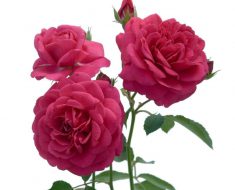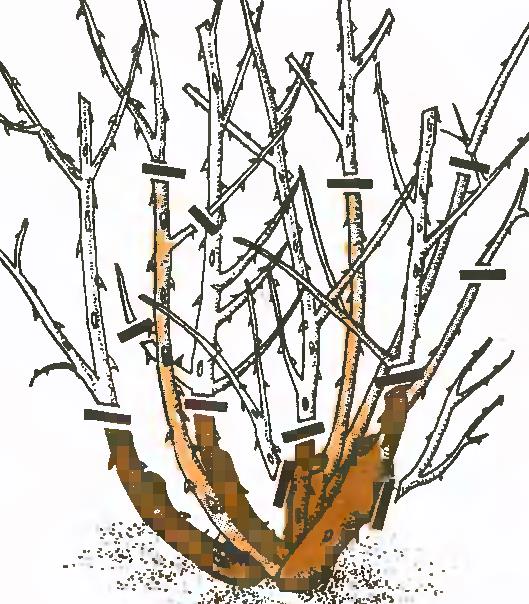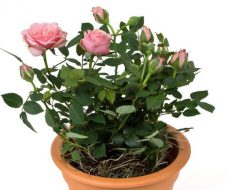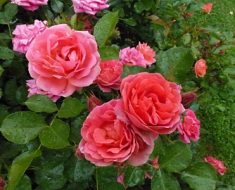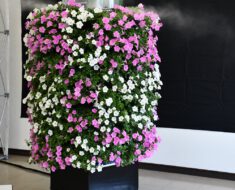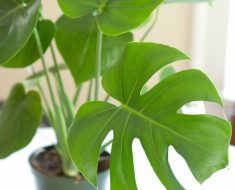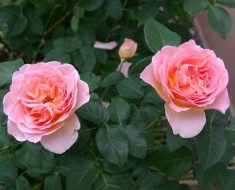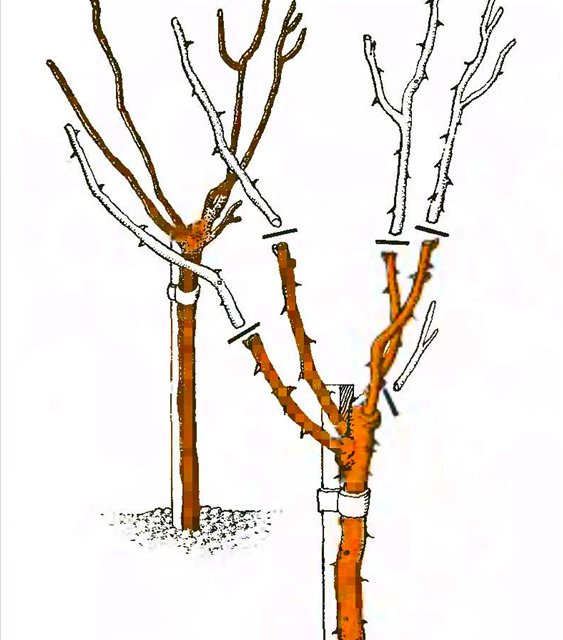Rose YOUNG LYCIDAS has charming purple-raspberry flowers with an aroma in the style of Antique roses with notes of cedar wood and tea roses. She is a branchy and exceptionally healthy plant. It was for the aroma that she was awarded in Barcelona. In England, 400 years ago, the famous poet John Milton was born, in whose honor the English rose YOUNG LYCIDAS was named.
CHARACTERISTICS OF YOUNG LYCIDAS ROSES
- Group – English roses
- Subgroup – English hybrids of Old roses
- Main form – shrub
- Height – 1.5 m
- Diameter – 1.2 m
- Bush form – oval-round
- Color of flower – purple-raspberry
- Number of petals – 90
- Form flower – rosette-shaped bowl
- Flower size – 10-12 cm
- Flowering form – clusters
- Flowering type – repeating
- Aroma – medium saturation
- Foliage – medium sized, semi-matte, green, plentiful
- Shoots – erect, strong, numerous, with spikes
- Features – increases weight by 3-5 years after planting; the first flowering is more abundant than subsequent ones; responds well to dressings
- Resistance to powdery mildew – medium
- Resistance to black spotting – medium
- Cold resistance – 5-11 USDA zones
- Breeder – D. Austin
- Catalog name – Ausvibrant
- Year of introduction to the culture – 2008
- Soil – all types of
- pH – there may be slight variations from neutral (5.6 – 7.8)
- Drainage – required
- Plot – sunny / partial shade
- Container – yes
- Standard – yes
- Planting types – mixed planting, borders, hedges, container garden
- Pests – typical for roses
- Diseases – downy mildew, powdery mildew, black spotting, rust of roses
Take care of a YOUNG LYCIDAS rose like this:
- Planting for roses is the most important step in leaving them. Rose YOUNG LYCIDAS prefers sunny areas with well-arranged drainage. It grows on almost all types of soils. The earth must be loose in order to allow enough water and air to pass through to the root system.
- Watering. Roses are watered as necessary – up to 10 liters of water per 1 adult bush on average 2 – 3 times a week. In dry times, watering is more frequent. If the English rose YOUNG LYCIDAS grows in a container, then watering is usually more frequent. In both cases, it all depends on weather conditions.
- Fertilizing with fertilizers is carried out at least 2 to 3 times during the growing season. It can be both mineral fertilizers and organic. Mineral complexes, which are introduced by spraying, also give roses. For roses growing in pots, top dressing is more frequent, but smaller doses are used.
- Pruning roses depends on the group to which it belongs. Pruning is done twice: in the summer, faded parts are constantly trimmed to stimulate the appearance of new flowers, and in the fall, winter or early spring, pruning is performed to form the plant and prevent it from diseases or pests hiding under the bark of the plant. The, potted rose is YOUNG LYCIDAS also pruned.
- Loosening and weeding the soil around the rose bush is necessary for the circulation of air, moisture and nutrients for the root system. To minimize your labor, use mulching. This agricultural technique will help reduce weeds and leave the soil longer moist. This applies to container roses.
- Shelter for the winter is especially necessary if the minus temperatures are very low or in winter, frequent long thaws are characterized by a sharp decrease in minuses. Be sure to cover the English rose YOUNG LYCIDAS growing in pots.
Enjoy your cultivation!
